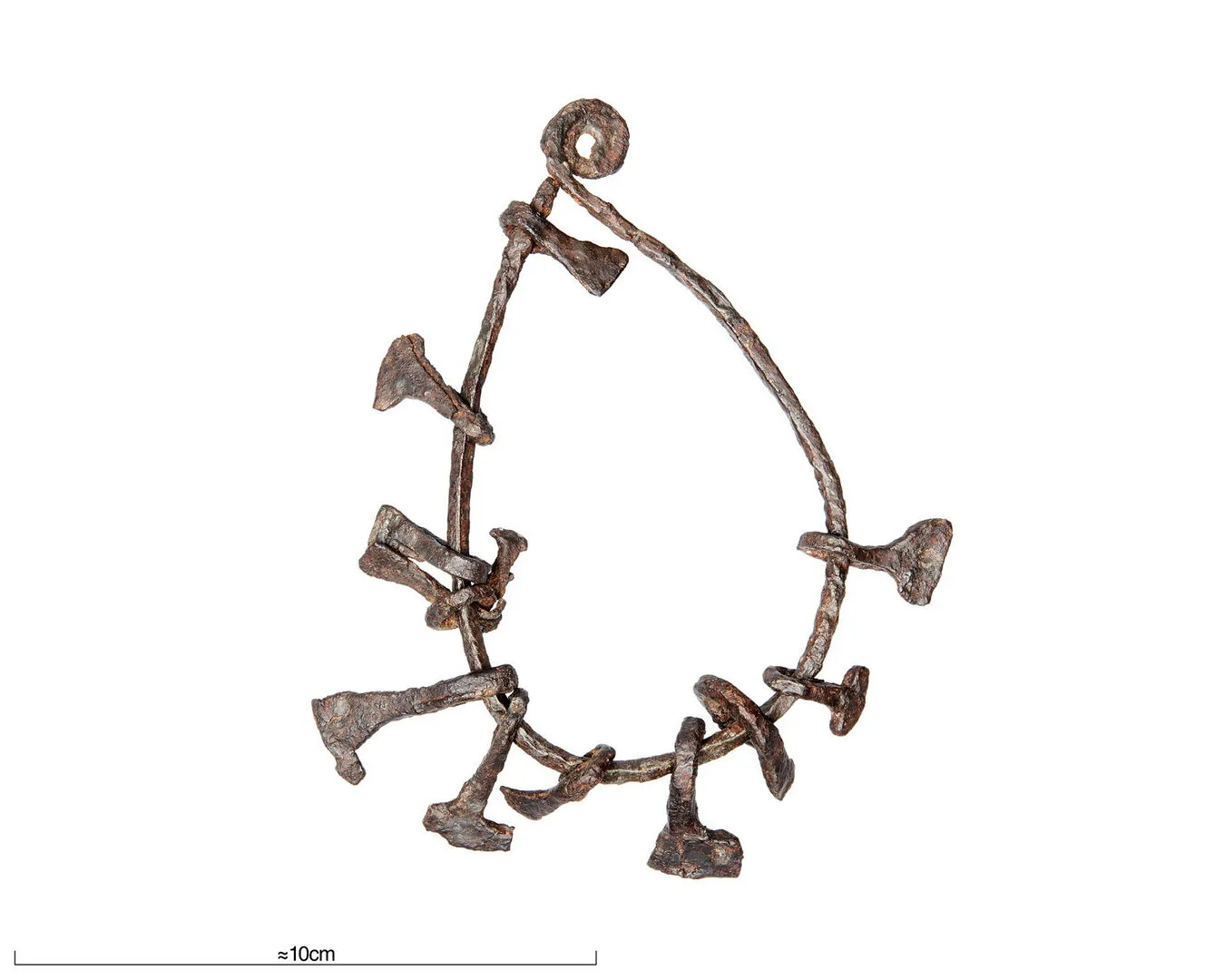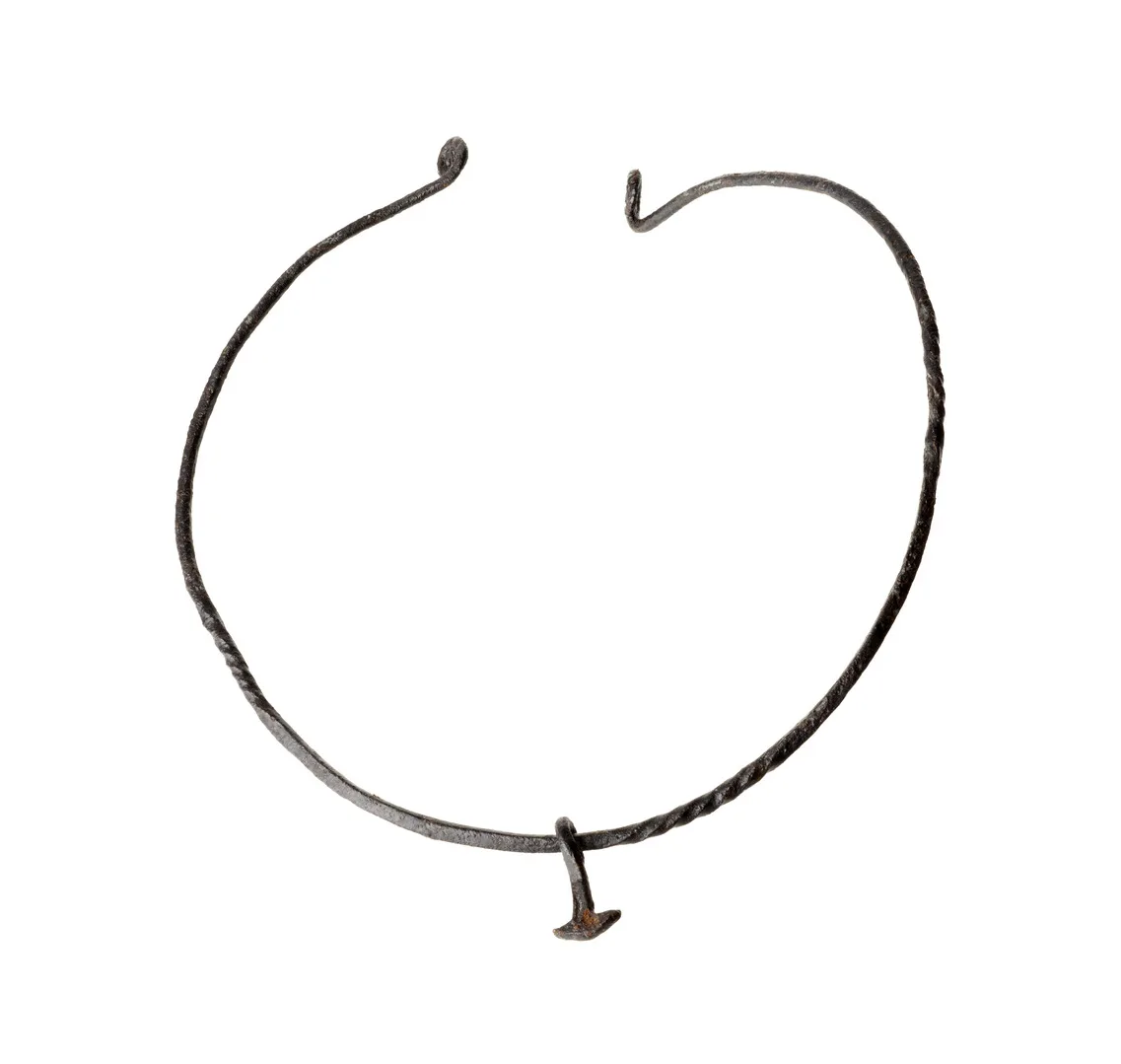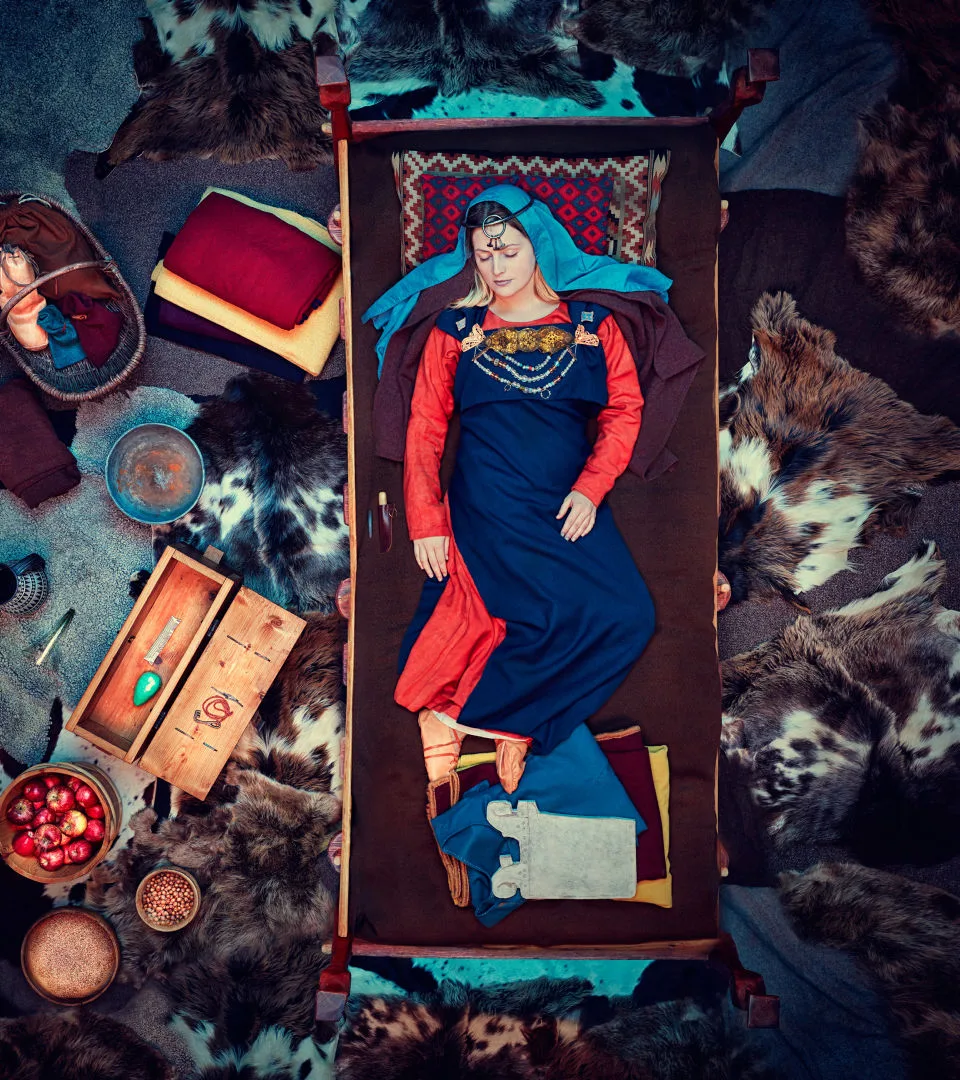Thor's hammer rings
Iron Age
500 BC – AD 1100
Viking Age
AD 800 – AD 1100
Middle Ages
AD 1050 – AD 1520
However, Thor’s hammer rings are not only found in graves; they also appear at settlement sites. Archaeologists can be fairly certain they were used in Norse religious practice in some way, we just don’t know exactly how. Perhaps they were votive offerings to a god, or served a, magical purpose.
A Thor’s hammer is an amulet shaped like a hammer or mallet. In the Viking Age, it was used as a symbol referring to Thor’s weapon, Mjölnir, a name that likely means “the crusher.”

Thor's hammers from Birka
Thor was constantly hunting his enemies, the giants, who felt the crushing power of his hammer. As a symbol, the hammer probably replaced an earlier thunder and lightning emblem: the axe. Both symbols appear in Bronze Age , in ritual contexts and in the hands of gods.
Thor was the god of thunder. His name forms the first part of the Swedish word tordön, meaning thunder or rumbling. He was also a fertility god, as he brought rain to the fields. In eastern Sweden, the place name Torsåker (“Thor’s field”) is widespread. The suffix -åker (“field”) indicates that Thor was worshipped as lord of crops and growth.
In life’s important moments, people turned to Thor. He was the guarantor of marriage and protector of the dead. Sometimes, the hammer symbol appears on 11th-century runestones, at a time when Christianity was beginning to spread into what is now Sweden. The hammer was then set in contrast to the new symbol: the Christian cross.

The Viby Hammer
An example from Viby Gård in Sollentuna
In 1989, a housing development was planned at Viby Gård in Sollentuna. An archaeological investigation revealed a settlement on the site dating back at least to the 7th century AD and continuing into modern times. Among the finds was a Thor’s hammer ring, dated to the 9th–10th century.
The neck ring has a diameter of 12.5 centimetres, with three short sections twisted to form a spiral-grooved pattern. The ends of the ring are rolled so it can be fastened together. A small Thor’s hammer hangs from the ring.
It was found in a soil layer that also contained horseshoe nails, knife blades, a slate whetstone, and pottery, typical finds from a settlement. On the nearby burial ground, Thor’s hammer rings were also found, though they were far more fragmentary and not in as fine condition as the one from the settlement.
Thor’s hammers from the Viking Age were made of silver or iron, and occasionally of amber. Around 50 silver Thor’s hammers are known. Most come from hoards, and some from graves. They are distributed across southern and central Scandinavia and Iceland, with a few finds in Poland and England. Rings similar to the one from Viby Gård have also been found in graves, including in Gnezdovo, Russia.





